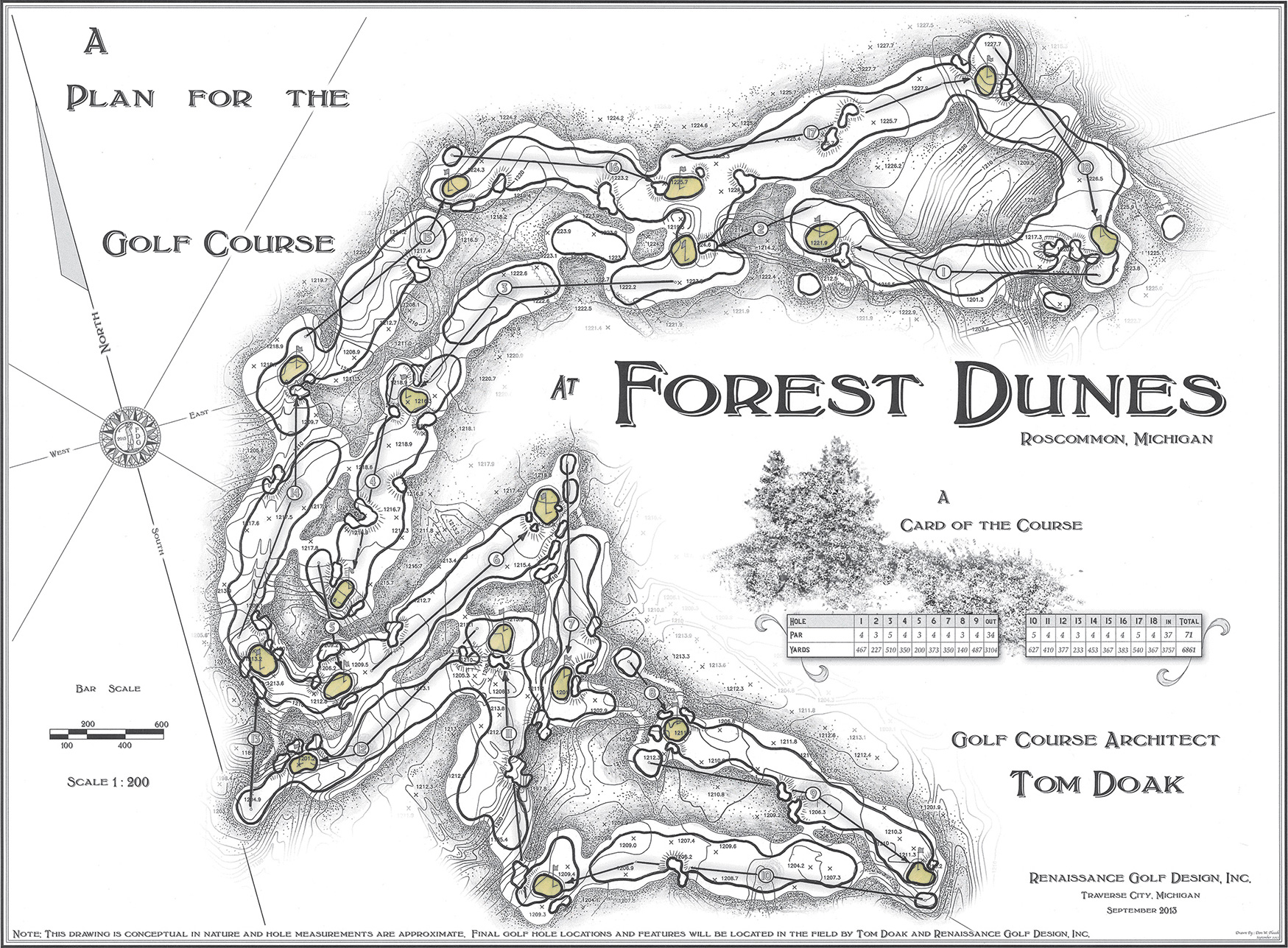“You feel like you’re in a maze of golf.”
—Golf.com

The Loop – Red
Golf Digest: America’s 100 Greatest Public Courses – #69
The Red and Black routings were brilliantly designed by world-renowned architect and Michigan native Tom Doak. The Red routing plays counter-clockwise around The Loop, starting to the right of the 18th green and playing toward the red flag in the distance. The opening par-4 begins with a deceptive drive into a valley followed by a pitch back up past a yawning bunker. The green is just the first of 18 to test your putting mettle. Doak offers a number of challenges throughout, including the par-3 4th with its green tilting to the left and away from the line of play; the short 6th, playing over a natural bowl of native grasses; and the par-5 13th with an oak tree on the right, 120 yards from the green that will obstruct your approach if you haven’t played left off the tee.

The Loop – Black
Golf Digest: America’s 100 Greatest Public Courses – #58
The Black routing plays clockwise around The Loop, starting to the left of the 18th green and playing away to the white flag on the horizon. You’ll play to white flags for the front nine, and red flags for the back. If you’re ever unsure of which way to go, keep left! Despite being played on the same ground as the Red Course, the Black presents golfers with its own unique challenges including the long par-4 3rd, with its green sitting on the edge of a ridge; the short par-3 8th, where there are bunkers right up at the front of the green ready to catch a short tee shot, but plenty of fairway behind for roll if you go long; and the long 14th, playing up into the back of the Redan green, where short grass to the left of the green presents as difficult a third shot as being in the bunker you were trying to avoid.



